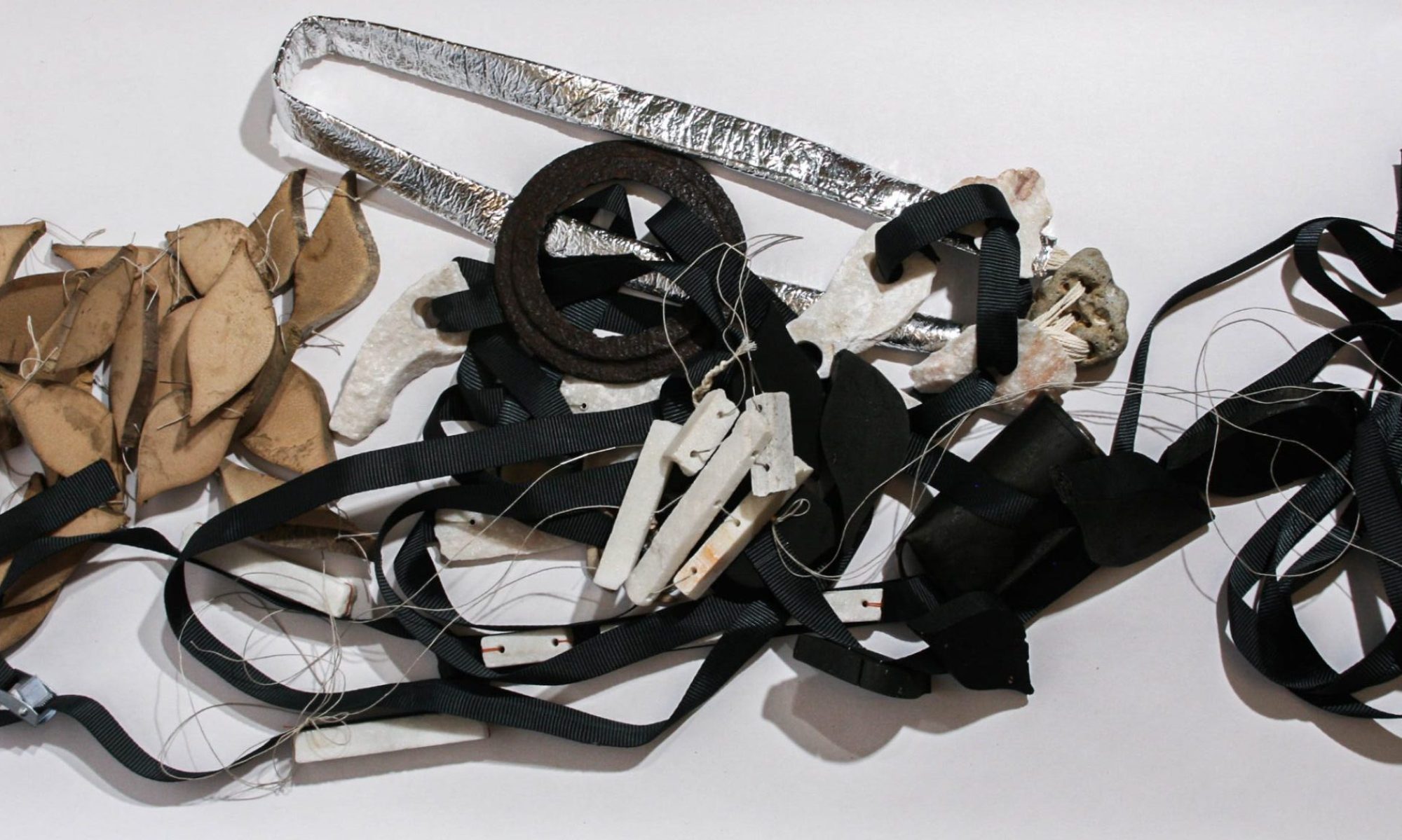Group exhibition “Viņas Da(r)bā”, Goethe Institute Riga, Latvia, 2016 September 1st – 27th
Artists: Darja Semjonova, Ginta Grūbe (ex. Zabarovska), Ieva Korne, Ilze Egle, Lāsma Ansone, Liene Ventniece, Madara Keidža (Madara Krātiņa), Maija Vītola, Rasma Pušpure, Una Mikuda
This was the third of a series of exhibitions for a group of students from the Art academy of Latvia Metal design department. The first exhibition was initiated and currated by Rasma Pušpure and took place in her hometown Gulbene. “Viņas Da(r)bā” exhibition differed from the first two by having fashion photography accompanying each authors work. The previous exhibitions were accompanyed by paintings of Arta Kalnina. As one can read in Rasma’s homepage: “Combination of paintings and jewelry art correlate in terms of new directions of latvian art and craft.” I would rather call the paintings a refreshment among the showcases. The second exhibition was nearly identical to the first and shared the same title “Subjective and Perspective“. It took place in Aluksne, the city Una Mikuda is from. As Una was an irreplaceable asistent in the preparation of the first exhibition she organized the exponent transfer to her hometown. As I was not present in the putting up and opening of thefirst exhibition (in Gulbene) I wanted to help with arranging the second one (in Aluksne). Here I must say a big thank you to Unas family for the worm welcome and accommodation while building the exhibition in Aluksne Cultural Center. And of course thank you to my supportive husband who traveled with me and helped with building the exhibition. As I am from Riga and the exhibition had already travelled from Gulbene to Aluksne the idea of showing the work in Riga was born. Liene Ventniece noted a competition for exhibition venue at Goethe Institut. Thank to all the group we came to a new title and developed the idea of photography added to the jewelery exposition. This resulted in a widely visited event. Around 3,000 people visited the exhibition as Antra Balode from Goethe Institut noted. There were around 1,000 visitors during the White Nights (Baltās Naktis) and Goethe Institut hosted a well attend conference while the show was open. Antra claimed this to be the most visited exhibition in a while (at Goethe Institut) as people came specially to view the jewellery not just passing by.
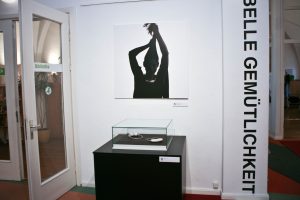
Maija Vītola
Necklace CLEAN 2016; material: porcelain, silver; photo: Otto Zitmanis; model: Gundega Kaņepāja
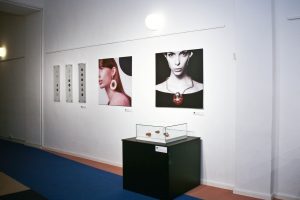
Exhibition view from right: Rasma Pušpure, Liene Ventniece
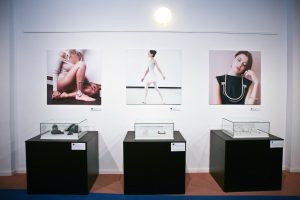
Exhibition view from right: Madara Keidža, Ginta Grūbe, Ieva Korne
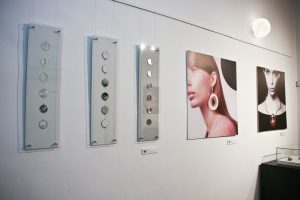
Photo from from right: Rasma Pušpure
Earring to* PLEASE. FEMININITY 2016; material: brass; photo: Monta Apsāne; model: Elīna MOON MODELS.lv; makeup : Lyn Weiscz
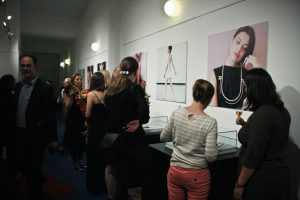
View from the opening night
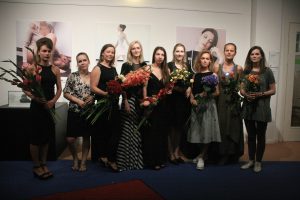
From right: Madara, Maija, Liene, Rasma, Lāsma, Ieva, Una, Darja, Ginta (Ilze not appearing in the photo)
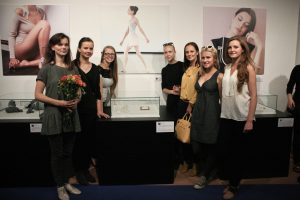
From right: Ginta (me) and my musical friends Ilze, Evita, Agnese, Ingrīda, Annija, Margarita
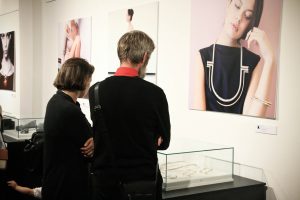
Exhibition view from left: Ieva Korne

With my lovely sister also model Terēze

Darja Semjonova
INSECTS (KUKAIŅI) 2016 material: aluminium, copper, silver
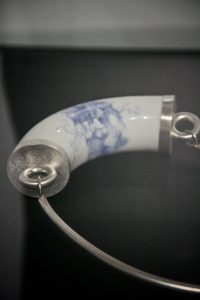
Maija Vītola
Necklace CLEAN 2016; material: porcelain, silver
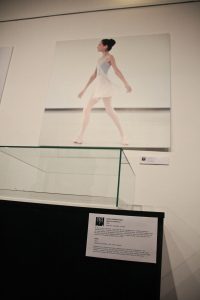
Ginta Grūbe
MADE IN FRANCE 2016; material: porcelain, silver; photo from personal archive; model: Terēze Zabarovska
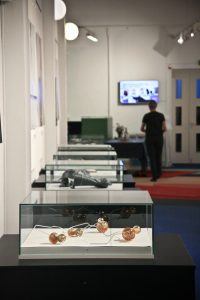
In front: Liene Ventniece
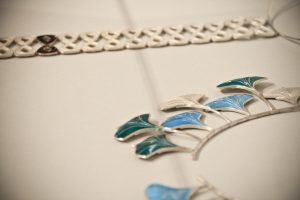
Lāsma Ansone
Sparkling Water 2016; material: silver, enamel
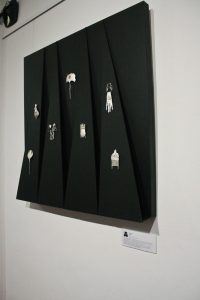
Ilze Egle
Collection FOREST (MEŽĀ) 2016; material: silver, amber
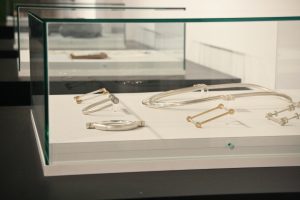
Ieva Korne
POSMI 2016; material: silver, brass, copper, enamel
